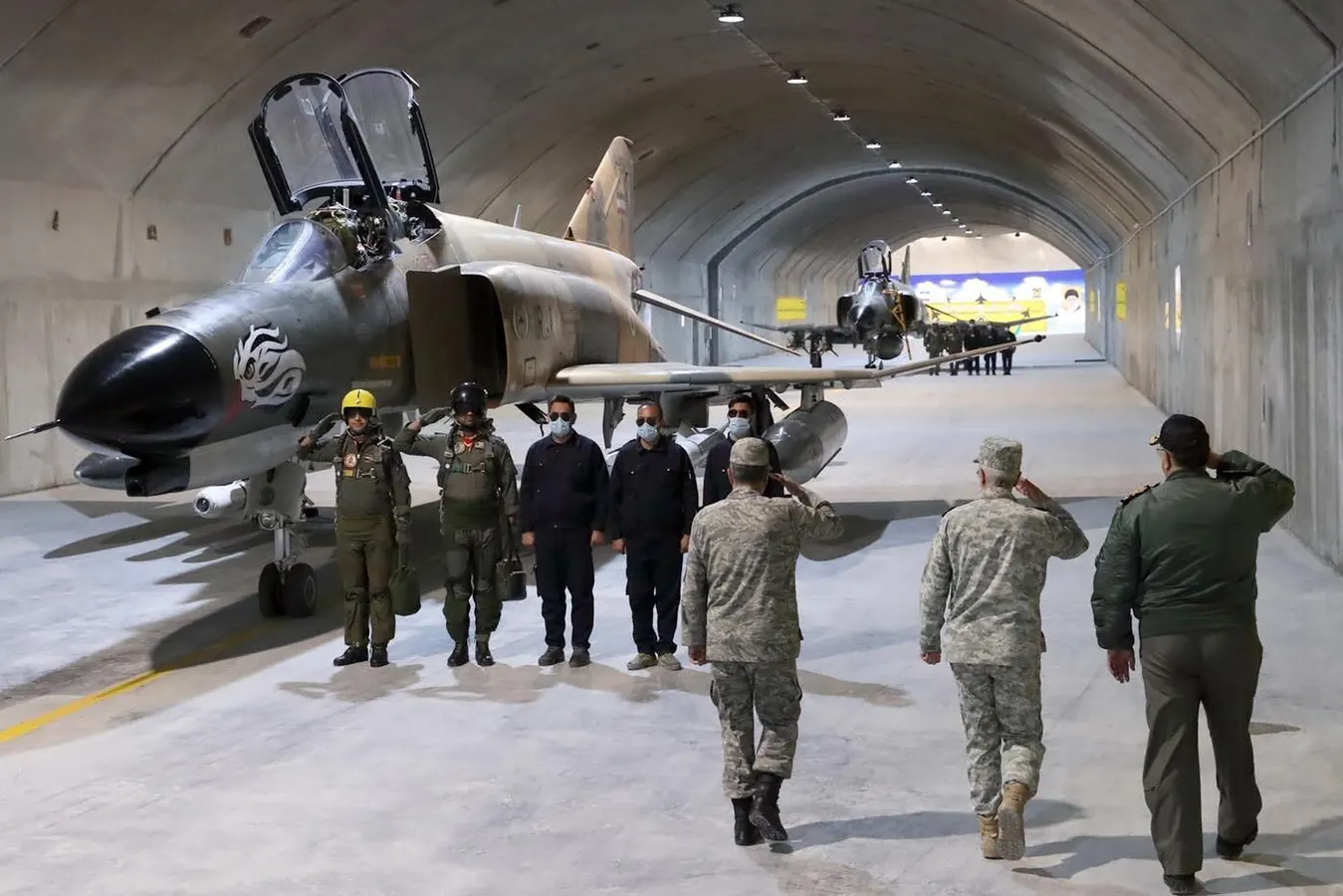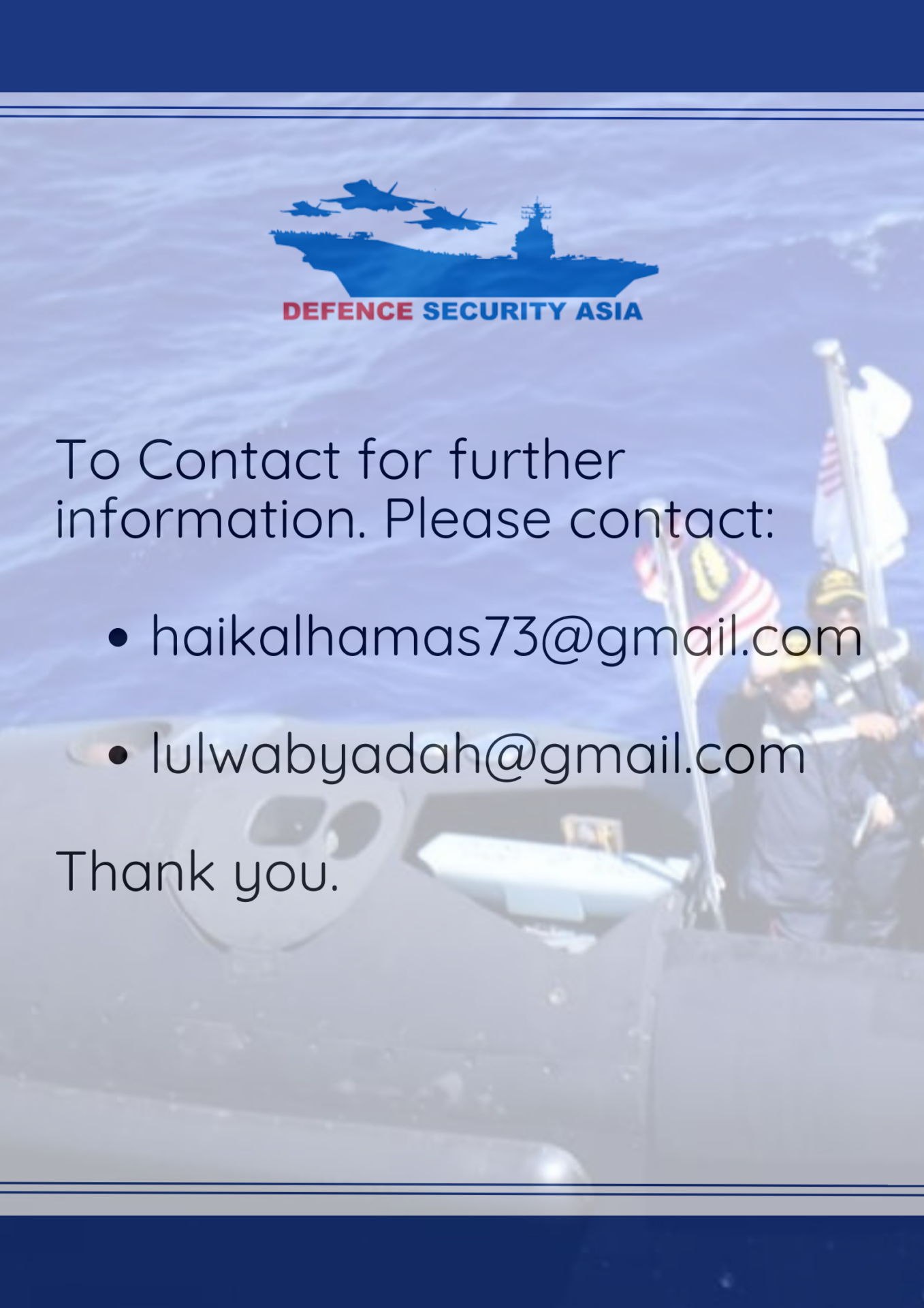Eagle 44: Iran’s Underground “Nerve Center” in Times of Conflict
"Any attack on Iran by its enemies, including Israel, will receive a response from many of our air force bases, including 'Eagle 44'," said Chief of Staff of the Iranian Armed Forces General Mohammad Bagheri to the country's state news agency, IRNA.
(DEFENCE SECURITY ASIA) — In February last year, the Iranian military revealed its first underground airbase to the media, known as “Eagle 44” (Oghab 44), built to house its fighter jets and most advanced drones.
“Any attack on Iran by its enemies, including Israel, will receive a response from many of our air force bases, including ‘Eagle 44’,” said Chief of Staff of the Iranian Armed Forces General Mohammad Bagheri to the country’s state news agency, IRNA.
IRNA stated that “Eagle 44” is among Iran’s most important military facilities and will be used to house fighter aircraft equipped with long-range guided cruise missiles.
Analysis by international defense observers has revealed that the underground Iranian airbase named “Eagle 44” is likely being prepared to accommodate Sukhoi Su-35 fighter jets that Iran is expected to receive from Russia.
Iran is expected to receive 24 Su-35 fighter jets, which are among Russia’s most modern fighter aircraft, by the end of this year, further enhancing the capabilities of the Iranian Air Force.

Brief on the Article:
Iran revealed its first underground airbase, “Eagle 44” (Oghab 44), in February 2023. Built to house fighter jets and advanced drones, the base is a critical military facility designed to withstand bombing attacks. It is believed to be located in the mountainous Hormozgan province, near the strategic Strait of Hormuz.
The airbase is reportedly being prepared for Russia’s Sukhoi Su-35 fighter jets, with Iran expecting delivery of 24 units by the year’s end, enhancing its air force capabilities. This acquisition stems from strengthened defense ties between Iran and Russia, fueled by Tehran’s supply of armed drones to Moscow for its Ukraine campaign.
Iran’s Air Force previously relied on aging Western jets, like the F-4 Phantom, inherited during the Shah’s era. Satellite imagery shows mock-ups of the Su-35 at “Eagle 44,” suggesting the base’s construction accommodates these aircraft.
The facility underscores Iran’s strategic military positioning, signaling its readiness to respond to threats, including from Israel, as stated by General Mohammad Bagheri. Defense analysts and media highlight the base’s proximity to vital oil shipping routes, emphasizing its regional significance.
While the exact location of the Iranian underground airbase is highly classified, local media reports suggest that it is situated “hundreds of meters beneath the mountains and capable of withstanding bombing attacks from American bombers.”
However, some defense analysts claim that “Eagle 44” is located approximately 120 km north of Bandar Abbas on Highway 92 from Hajjiabad to Shahrake Shahid Rajai, about 30 km west of Tarom, Hormozgan.
In some images published by local media, numerous Phantom F-4E fighter jets are seen at the underground base.
Analysis by international defense observers has suggested that the underground Iranian airbase named “Eagle 44” is being prepared to accommodate Sukhoi Su-35 fighter jets reportedly to be received from Russia.
Iran is expected to receive 24 Su-35 fighter jets, which are among the most modern Russian fighter aircraft, further enhancing the capabilities of the Iranian Air Force.

Military relations between Iran and Russia have been growing closer, with Tehran becoming a major supplier of armed drones to Moscow for use in its military campaign in Ukraine.
Last year, Iran announced its intention to receive Su-35 fighter jets from Russia, a result of the close cooperation between the two countries in the field of defense, with Tehran emerging as a major weapons supplier to Russia in its military campaign in Ukraine.
Iran’s Air Force had previously relied on aging Western fighter jets like the F-4 Phantom, which it inherited during the pro-Western Shah of Iran’s rule.
Russia offered Iran all of these fighter jets after the original buyer, Egypt, faced economic sanctions from the United States if it continued with the purchase.
Satellite images also revealed that the Iranian military has built a mock-up of the Su-35 fighter jet to ensure that the underground airbase has sufficient space to house the Russian-made fighter aircraft.

“The mock-up of the Russian fighter jet is likely used to ensure that every space within the underground base is spacious enough for the movement of the Su-35, further proving that the aircraft will be placed in the underground facility,” said former US government imagery analyst Chris Biggers to The New York Times.
According to him, Iran has built two mock-ups of the Su-35 fighter jet to ensure that the construction of the “Eagle 44” underground airbase has adequate knowledge of the aircraft’s size and, in turn, facilitates the efforts to build the underground base.
The New York Times also reported that the underground Iranian airbase, which will house the country’s fighter jets and most advanced drones, is located in the mountainous region of Hormozgan province in southern Iran.
Hormozgan province is only 100 miles from the Strait of Hormuz, a vital maritime route for oil-carrying ships.
Satellite images analyzed also indicate that the construction work is still ongoing. — DSA



Comments are closed.